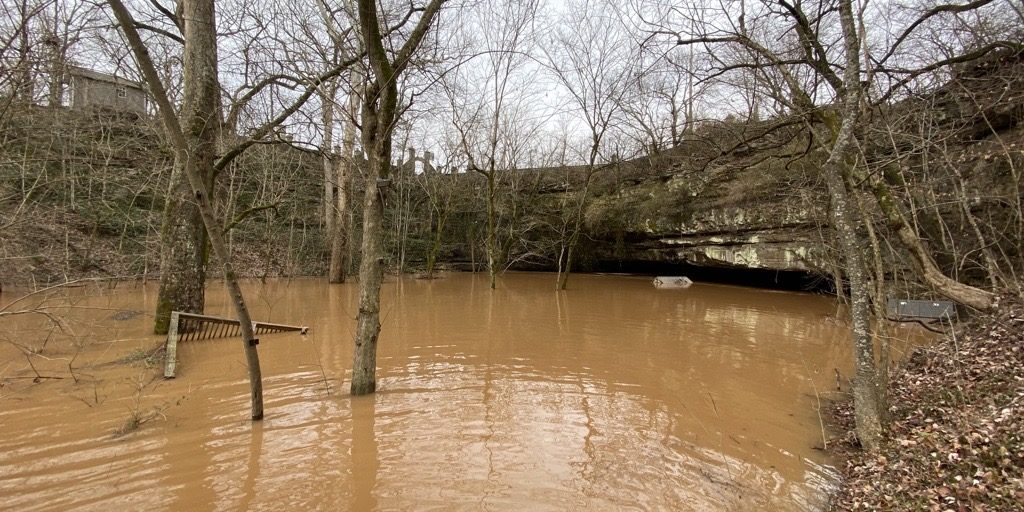Over the past weekend, we received large amounts of rain in the area in a short amount of time. The 5+ inch rainfall across South Central Kentucky shattered the daily rainfall record for February 28 and beat the all-time record for the month of February. This resulted in flash flooding and the highest flood waters seen at Lost River Cave in over a decade. Read on to learn how that 5-inch rainfall turned into about 50 feet of flooding.
From 5 inches to 50 Feet
So how can under 5 inches of rain lead to approximately 50 feet of water flooding the mouth of the Cave within hours? The answer is simple. Lost River Cave is at the lowest point of the Lost River Watershed, a 55 square mile area. The Cave is like a sink drain at the bottom of that 55 square mile area. So the rain that falls within that area makes its way to the Cave. When a large amount of rain falls in a short period of time, the drain becomes overwhelmed and there’s a build-up of water like we’ve seen this week. This is especially likely in the winter season. This recent rainfall led to Lost River Cave’s deepest flood since May 2010.
What is a Watershed?
A watershed is a land area that drains or sheds water into a specific body of water. Smaller watersheds are part of bigger ones like the Lost River Watershed is part of the Upper Green River Watershed. Watersheds are important because they can impact natural habitats, our drinking water, bodies of water like lakes that are used for recreation, and more.
Learn more about watersheds:
Video: What is a Watershed?
Webpage: EPA Watershed FAQs
How Can You Help Promote a Healthy Watershed
There are many benefits of a healthy watershed, like clean drinking water and lower rates of illness. Here are a few ways you can help keep your watershed clean:
- Conserve water by taking shorter showers and turning off faucets while not in use
- Don’t pour toxic household chemicals down the drain or on the ground; take them to Household Hazardous Waste Day
- Use hardy plants that require little watering, fertilizing, or pesticide use
- Pick up after your pups and put their waste in the toilet or the trash
- Drive less to reduce pollutants from car exhausts or leaks
- Use outdoor surfaces, like wood, brick, or gravel, that allow water to soak in instead of runoff
- Never pour used oil or antifreeze down drains
Learn more:
Webpage: Pollution Prevention Tips from the EPA
Webpage: Benefits of a Healthy Watershed
Webpage: Bowling Green’s Stormwater Best Practices Manual


